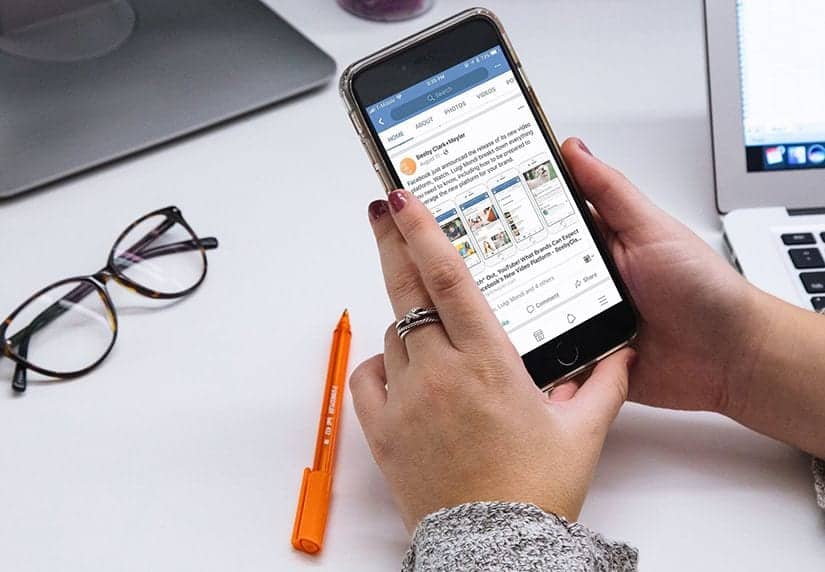SEO and Copywriters: Working Together Works
In Part One, Erin Mitchell, copywriter at BCM, talked about how SEO experts and Copywriters can work together to maximize content value and increase...

As we close in on the end of 2013, there is a lot of talk about the growth of mobile, tablets, and connected devices. Internet connected devices are proliferating and taking on new forms and creating new uses in the process. Whether it is Google Glass, the latest smartphone, e-reader, or tablet, consumers are increasingly multi-device creatures. Device agnosticism is a digital trend that is beginning to present itself as a result of this shift in device uses.
Consumers increasingly want – and expect – that they will be able to interact with the content and utilities they use no matter what device they are on. Here are some things we have noticed that are increasing in importance as part of a device agnostic world.
Responsive Design – Flexible layouts that can adapt to various devices’ screen sizes, resolutions, and bandwidth compatibilities are now an industry standard in web and app design. It’s really the only way to feasibly create content so it can be presented adequately on the most common devices out there. Most responsive designs are based on screen pixel-width, which works well in most cases. However, as content starts to spread to new devices (smart TVs, car monitors, refrigerator screens) new methods of responsive design will appear, such as viewing distance.
The Death of Premium Device Access – There are various notable companies that charge users extra to access content on mobile/tablet/elsewhere that is freely available on desktop. Want to watch the latest episode of The Daily Show on Hulu? You can watch it for free on your laptop, but if you want to watch it on your phone, you need Hulu Plus ($7.99 per month).  This is a business model that we think (and hope) will fade out—and it already is: Spotify has announced a step in the right direction, now offering free access to its streaming music catalog on iOS and Android smartphones and tablets for the first time since launch. This is a change from only offering radio mode (which was the only way you could hear music on your smartphone or tablet unless you bought their premium subscription). This article sums it up nicely:
This is a business model that we think (and hope) will fade out—and it already is: Spotify has announced a step in the right direction, now offering free access to its streaming music catalog on iOS and Android smartphones and tablets for the first time since launch. This is a change from only offering radio mode (which was the only way you could hear music on your smartphone or tablet unless you bought their premium subscription). This article sums it up nicely:
“Presumably, the idea before was that you’d get a taste of Spotify for free on the web, and that would tempt you to buy mobile access. However, now many people hardly use traditional computers, especially in developing markets where people never owned them and skipped straight to mobile. With no way to try out Spotify on mobile, the company had no way to upsell them to paid plans.”
As desktop PCs continue to lose market share to other connected devices, premium device access will become a thing of the past. Cloud Storage – Increasingly, devices no longer store your data, they are merely a way to access it. Services like Google Drive, SkyDrive, Creative Cloud, Dropbox, etc. are eliminating the need for storing files on hard drives, memory cards, and thumb drives. I remember when I lost my phone in 2007. I was devastated—hundreds of pictures and songs were gone for good. Now, if a phone is lost or broken and a replacement is needed, after a quick sync everything can be restored. Faster wireless networks and combined with increasingly cheap storage allow your information to flow seamlessly from device to device. 
So what does device agnosticism mean for marketers? Here are three ways to take advantage of this trend:
#1: Use responsive creative design to limit your workload. Responsive design isn’t limited to webpage and app development. In the past few years the splintering of screen sizes has meant more work for digital banner ad designers, but a new solution known as responsive creative design is here to help. Check out this IAB report for more on the topic. We are seeing the development of a new industry that caters to this, with companies like Specless creating platforms to help adapt creative to the different formats in media and devices.
#2: Push publishers to try new ad formats. If companies like Spotify are making their services free for more devices and dropping subscription-type revenue, that means they will rely more heavily on advertising to profit from users. But users don’t want “ads”. For example, what about branded playlists from Spotify assembled based on the brand attributes? Simple examples might be workout playlists for Adidas or Nike or a holiday seasonal playlist from Tiffany & Co. Agencies should be looking to develop advertising so good, people embrace it as a product or service.
#3: Treat an impression as one conversation in an extended brand/consumer relationship. Cookies are quickly becoming irrelevant. A customer profile based on single device usage is not really representative of that customer. And it is becoming increasingly less so. As of now, there are only a handful of companies that truly have the capabilities to build a multi-device profile. Tracking methods of the future will be able to tag users across multiple devices throughout various stages of the buying cycle, but for now there are other ways to approximate a unified view of the customer. Cater your messaging strategy to be more personal and relevant, similar to how best-in-class email marketing is done.
How do you think these developments will affect marketers?

In Part One, Erin Mitchell, copywriter at BCM, talked about how SEO experts and Copywriters can work together to maximize content value and increase...

Nervous that your brand’s Facebook videos are not getting the attention you’d like? You should be. The hard fact is, you have exactly 2.5 seconds to...

Mobile coupons are a great way to incent consumers and can provide direct means of tracking marketing efforts and measuring ROI. Here are five tips...